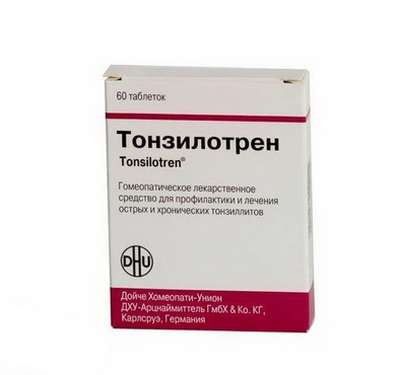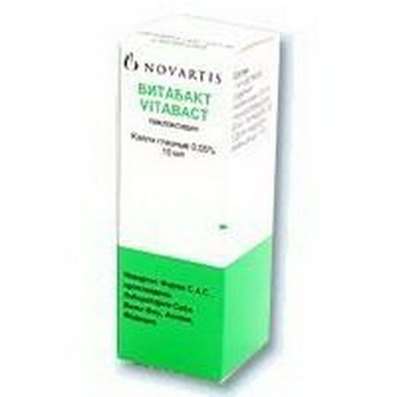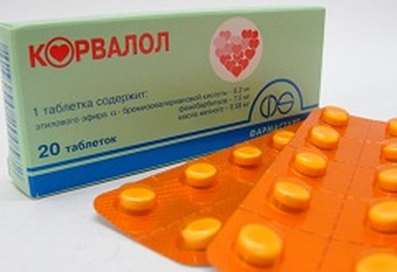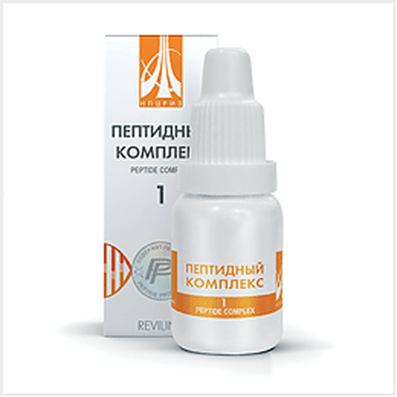Instruction for use: Sodium oxybutirate
I want this, give me price
Latin name: Natrii oxybutiras (genus. Natrii oxybutiratis)
Chemical name
4-Hydroxybutyric acid sodium salt
Gross formula
C4H7O3Na
Pharmacological groups of substance Sodium oxybutirate:
Anesthetic means
Antihypoxants and antioxidants
Sedatives
The nosological classification (ICD-10)
F48.9 Neurotic disorder, unspecified: Neurosis; Secondary neurotic symptom; Other neurotic conditions; Neurosis with increased irritability; Neuroses; Neuroses of all kinds; Neuroses with retardation; Neuroses of the heart; Neurotic disorders in alcoholism; Neurotic disorders with retardation; Neurotic disorders with anxiety syndrome; Neurotic reactions; Neurotic symptoms with alcoholism; Neurotic states; Neurotic syndrome; Neurotic disorder; Attack of neurological dysfunction; School neurosis; Emotional Stress
G47.0 Sleep disturbance and sleep disturbances [insomnia]: Insomnia; Insomnia, especially the difficulty of falling asleep; Desynchronosis; Prolonged sleep disorder; Difficulty falling asleep; Insomnia; Short-term and transient sleep disorders; Short-term and chronic sleep disorders; Short or shallow sleep; Disturbance of falling asleep; Sleep disturbance, especially in the phase of falling asleep; Sleep disturbances; Sleep Disorders; Neurotic sleep disorder; Shallow shallow sleep; Shallow sleep; Unsatisfactory quality of sleep; Night Awakening; The pathology of sleep; Postmodern violation; Transient insomnia; Problems with falling asleep; Early Awakening; Early morning awakening; Early Awakenings; Sleep disorder; Persistent insomnia; Difficult to fall asleep; Difficulty falling asleep in children; Difficulty falling asleep; Persistent insomnia; Deterioration of sleep Chronic insomnia; Frequent nocturnal and / or early morning awakenings; Frequent nocturnal awakenings and a feeling of shallow sleep; Night Awakenings
G47.4 Narcolepsy and cataplexy: Cataplexy; Narcolepsy; Jelino's disease; Narcoleptic disease; Narcolepsy is essential
G92 Toxic encephalopathy: Alcoholic encephalopathy; Toxic brain damage; Toxic damage to the central nervous system; Encephalopathy in chronic alcoholism; Brain Injury Toxic; Encephalopathy on the background of alcoholism; Acute lead encephalopathy
H40.1 Primary open angle glaucoma: Open-angle glaucoma; Open angle glaucoma; Primary glaucoma; Pseudoexfoliation glaucoma; Increased IOP
S06 Intracranial injury: Traumatic brain injury; Craniocerebral injury with predominantly stem lesion level; Condition after traumatic brain injury; Brain Injury; Injuries of the skull; Brain Injury; Brain Injuries; Contusion of the brain; Trauma of the brain; Craniocerebral injury; TBI; Traumatic brain injuries; Consequence of the BTT; Consequence of craniocerebral trauma; Consequence of CCT; CRANIAL INJURY; Traumatic brain injury; Traumatic cerebral; Concussion
Z100.0 * Anesthesiology and premedication: Abdominal surgery; Adenomectomy; Amputation; Angioplasty of the coronary arteries; Carotid artery angioplasty; Antiseptic treatment of skin in wounds; Antiseptic treatment of hands; Appendectomy; Atheroctomy; Balloon coronary angioplasty; Vaginal hysterectomy; Venous bypass; Interventions on the vagina and cervix; Interventions on the bladder; Interference in the oral cavity; Reconstructive-reconstructive operations; Hand hygiene of medical personnel; Gynecological Surgery; Gynecological interventions; Gynecological operations; Hypovolemic shock during surgery; Disinfection of purulent wounds; Disinfection of the edges of wounds; Diagnostic Interventions; Diagnostic procedures; Diathermocoagulation of the cervix; Long-term surgeries; Replacement of fistulous catheters; Infection in orthopedic surgical interventions; Artificial heart valve; Kistectomy; Short-term outpatient surgery; Short-term operations; Short-term surgical procedures; Cryotyreotomy; Blood loss during surgical interventions; Bleeding during surgery and in the postoperative period; Kuldotsentez; Laser coagulation; Laserocoagulation; Laser retinopathy of the retina; Laparoscopy; Laparoscopy in gynecology; Likvornaya fistula; Small gynecological operations; Small surgical interventions; Mastectomy and subsequent plastic surgery; Mediastinotomy; Microsurgical operations on the ear; Mukinging operations; Suturing; Minor surgery; Neurosurgical operation; Eclipse of the eyeball in ophthalmic surgery Orchiectomy; Pancreatectomy; Pericardectomy; The rehabilitation period after surgical operations; Reconvalence after surgical intervention; Percutaneous transluminal coronary angioplasty; Pleural Thoracocentesis; Pneumonia postoperative and post traumatic; Preparing for surgical procedures; Preparing for a surgical operation; Preparation of the surgeon's arms before surgery; Preparation of the colon for surgical interventions; Postoperative aspiration pneumonia in neurosurgical and thoracic operations; Postoperative nausea; Postoperative hemorrhage; Postoperative granuloma; Postoperative shock; Early postoperative period; Myocardial revascularization; Resection of the apex of the tooth root; Resection of the stomach; Bowel resection; Resection of the uterus; Liver resection; Small bowel resection; Resection of a part of the stomach; Reocclusion of the operated vessel; Gluing of tissues during surgical interventions; Suture removal; Condition after eye surgery; Condition after surgery; Condition after surgery in the nasal cavity;Condition after gastrectomy; Condition after resection of the small intestine; Condition after tonsillectomy; Condition after removal of duodenum; Condition after phlebectomy; Vascular Surgery; Splenectomy; Sterilization of surgical instrument; Sterilization of surgical instruments; Sternotomy; Dental surgery; Dental intervention on periodontal tissues; Strumectomy; Tonsillectomy; Thoracic surgery; Total gastrectomy; Transdermal intravascular coronary angioplasty; Transurethral resection; Turbinectomy; Removal of a tooth; Cataract removal; Removing Cysts; Removal of tonsils; Removal of myoma; Removal of mobile milk teeth; Removal of polyps; Removal of a broken tooth; Removal of the uterus; Removal of seams; Urethrotomy; Fistula of the luminal ducts; Frontoetmoidohaimorotomy; Surgical infection; Surgical treatment of chronic ulcers of extremities; Surgery; Surgery in the anus; Surgery on the large intestine; Surgical practice; Surgical procedure; Surgical interventions; Surgical interventions on the digestive tract; Surgical interventions on the urinary tract;Surgical interventions on the urinary system; Surgical interventions on the genitourinary system; Surgical intervention on the heart; Surgical procedures; Surgical operations; Surgical operations on veins; Surgical intervention; Vascular; Cholecystectomy; Partial resection of the stomach; Extraperitoneal hysterectomy; Percutaneous transluminal coronary angioplasty; Percutaneous transluminal angioplasty; Coronary artery bypass grafting; Extirpation of the tooth; Extirpation of infant teeth; Extirpation of pulp; Extracorporeal circulation; Extraction of the tooth; Extraction of teeth; Extraction of cataracts; Electrocoagulation; Endourological interventions; Episiotomy; Ethmoidotomy; Complications after tooth extraction
CAS code
591-81-1
Characteristics of the substance Sodium oxybutirate
Means for non-anional anesthesia.
White or white with a slightly yellowish tinge crystalline powder, sometimes shiny, with a weak specific odor. Easily soluble in water, soluble in ethanol, almost insoluble in acetone. Hygroscopic.
Pharmacology
Pharmacological action - anesthesia, anxiolytic, antihypoxic, sleeping pills.
Interacts with pre- and postsynaptic GABA and GABAA receptors, changes the functioning of Ca2 +, K + and Cl- channels, inhibits the release of activating mediators from the presynaptic endings and causes postsynaptic inhibition. Oppresses the central nervous system. In small doses has an anxiolytic effect, reduces the severity of neurotic disorders and vegetative reactions to stressful effects; has a hypnotic effect. In large doses causes general anesthesia and muscle relaxation. Has sedative, miorelaksiruyuschee (central), anticonvulsant and anti-shock effect. Has elements of nootropic activity. Increases the resistance of the body as a whole, as well as the heart, brain and retina to oxygen deficiency. It improves microcirculation, increases glomerular filtration, stabilizes kidney function in conditions of blood loss. Easily passes through gistogematicheskie barriers, incl. GEB.
There are data on the effectiveness of sodium oxybutyrate in trigeminal neuralgia.
When IV the introduction (introductory or obstetric anesthesia) the patient / patient falls asleep after 5-7 minutes, the surgical stage of anesthesia occurs 30-40 minutes later, the narcosis lasts 2-4 hours. For oral administration, the dream occurs after 40-60 minutes. Diuretic effect with IV introduction appears 10-15 minutes after administration and lasts 1.5-2 hours. With IV injection, up to 70% of the drug is excreted from the blood for 2-3 hours, with oral administration, the persistent drug concentration in blood is retained for 4-5 hours. Excretion of 70-80% sodium oxybutyrate occurs in 13-16 hours.
Application of the substance Sodium oxybutirate
Non-anional anesthesia (introductory and basic, with low-trauma surgery, with operative delivery, for maternity rest, for increasing maternal and fetal resistance to hypoxia, in elderly patients with hypotension and hypovolemia, in shock), open-angle glaucoma (to improve metabolism in the retina) , neuroses, neurosis-like conditions, intoxication and traumatic injuries of the central nervous system, insomnia, narcolepsy.
Contraindications
Hypokalemia, myasthenia gravis, late toxicosis of pregnancy with arterial hypertension and hypokalemia.
Side effects of the substance Sodium oxybutirate
Drowsiness during the day, convulsive twitching of the tongue, mimic muscles and limbs (with a quick introduction - more than 2 ml of 20% solution per minute), motor and speech excitation (including when leaving anesthesia), paradoxical reaction and transient psychomotor agitation in patients with alcoholism with the phenomena of encephalopathy (less often - in patients with drug addiction); violation of breathing until stopping (with rapid on / in the introduction); nausea, vomiting; hypokalemia; development of addiction.
Interaction
Strengthens the effects of narcotic analgesics and means for anesthesia. When combined with diazepam, synergy of sedative, hypnotic, anxiolytic and muscle relaxant effects is observed and the occurrence of epileptiform disorders is prevented. Strong antagonism with bemegrid.
Overdose
Symptoms: stop breathing.
Treatment: IVL, maintenance of respiratory and cardiovascular systems.
Routes of administration
IV, IM, inside.
Precautions for the substance Sodium oxybutirate
For outpatient use, care must be taken when driving vehicles and occupations that require quick mental and motor reactions and increased concentration of attention.

 Cart
Cart





